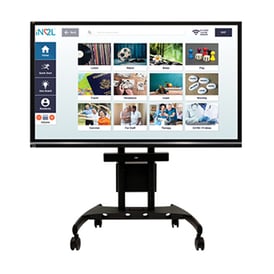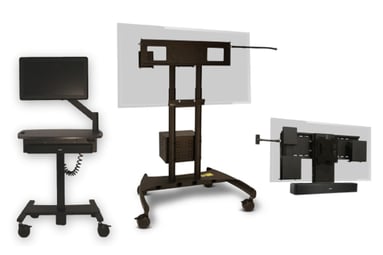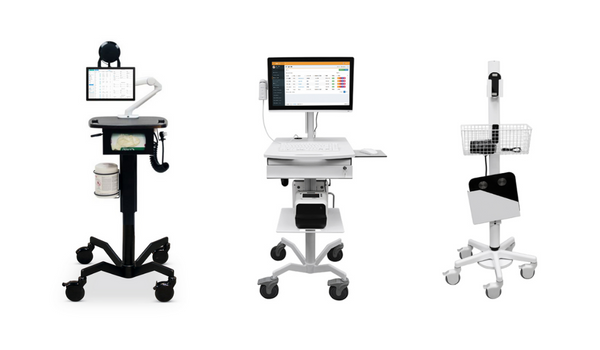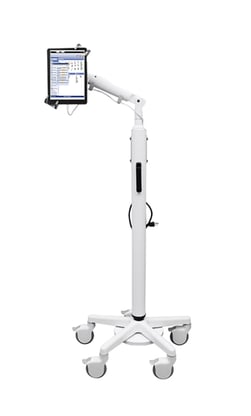By First Products on Aug 15, 2022 12:07:00 PM
Today’s hospitals are at the center of a technological revolution, with the typical facility housing thousands of networked devices under their roofs, including many that make telemedicine possible.
But nothing lasts forever, and that’s especially true of the software and devices that allow hospitals and clinicians to conduct consults and monitor or treat patients from afar.
So what’s the lifespan for most telemedicine devices? And what can providers do to better manage the fallout as telehealth products reach the end of their useful lives?
What is the Useful Lifespan of a Telemedicine Device?
According to the American Hospital Association (AHA), there are a total of 931,203 staffed hospital beds across the United States, with each one having between 10-15 networked devices per bed. That’s some 14 million connected medical devices just at hospital bedsides! Factor in non-bedside devices and clinical assets that are less directly involved in patient care, and the numbers grow even larger.
At some point, every one of those devices will reach the end of their useful life. That means that in any given year, the average U.S. hospital will have thousands of connected devices that need near-term end of product life monitoring and planning.
It’s also important to understand that tech manufacturers typically plan product lifespan for a set number of years. Once that period expires, a manufacturer will no longer issue security updates or offer technical support. That means even if a telemedicine device is still functional and could remain so for many years, there are risks associated with using unsupported devices and potentially vulnerable software.
In such a scenario, providers must either prepare contingency plans to mitigate those risks, or begin lobbying for the additional budget to replace those assets.
How Should Providers Manage Telemedicine Device Decommissioning?
Providers can’t simply discard a telemedicine device once it reaches the end of its useful lifespan. Instead, it’s absolutely mandatory that hospitals, clinics, and practices implement decommissioning procedures to ensure all sensitive information is wiped from the device.
To prevent disruption of essential operations and functions, it's also necessary that providers explore procedures for decommissioning old devices and integrating new tech well in advance. That means allowing adequate time to identify and purchase an appropriate replacement device, prepare for its integration, and train staff to deal with any changes between the two devices.
What About Telemedicine Device Recalls?
Unfortunately, medical device recalls are not rare.
In fact, manufacturers recalled a record 343 medical device products in the first quarter of 2018, affecting more than 208 million product units across the United States. Over 180 million of those devices were involved in Class I recalls, indicating that use of the product was associated with a reasonable chance of serious patient health problems or death.
Responding appropriately to any recall – including those impacting telemedicine devices – requires providers to implement a robust product monitoring and visibility program. That means knowing exactly which medical devices they have, what recalls are relevant, and where any affected tech is located. The program should also include procedures to smoothly reroute load demands around recalled equipment, as well as procedures for proper replacement of recalled devices.

 Accurate and And Active Inventory Management
Accurate and And Active Inventory Management
4 Steps to Effective Telemedicine Device End-of-Lifespan Monitoring
An effective plan for telemedicine device end-of-lifespan monitoring should encompass the following four best practices:
Accurate and And Active Inventory Managemen
Providers need to establish a comprehensive inventory system to track every device in their network, including:
- Expected lifespan of each device
- Contracted support lifespan
- Current lifespan stage
- Options for extending support/security
- Department where device is located
- Connectivity dynamics
- Software status
- Operational use
- Maintenance schedule
Create a Formal Decommissioning Checklist
To ensure orderly decommissioning with a minimum of disruption, the checklist should include the following steps:
- Stored data deletion
- Device decontamination
- Removal any identifiable labels or markings
- Dismantling the device to prevent further use.
- Disposing of electric or hazardous waste in a safe and environmentally responsible manner
Proactively Plan for Telemedicine Device Replacement
It’s essential that providers implement plans for device replacement long before replacement becomes necessary. This not only reduces disruption, but also facilitates the bundling of purchase orders for optimal flexibility and pricing:
- Clinical engineering team should work to define the operational scope of the new purchases and submit the proposal to relevant personnel.
- Consult with multiple vendors before making a purchasing decision and ask that they provide relevant specifications, including details on long-term support and liability commitments,
- Once a supplier is selected, the relevant product data should be entered into the inventory monitoring system
- Consult with IT and cybersecurity personnel to plan for the safe and orderly integration of the new devices into existing systems.
Assess and Prepare to Respond to Risks
By integrating FDA and manufacturer data streams with their management console and defining smart alert parameters, providers can quickly respond to recalls and safety alerts.
Providers should also establish procedures to stay on top of manufacturer announcements, f medical device security forums, and industry networks. It’s also crucial that they maintain open and active lines of communication with their vendor reps.
Mov-it Dynamic Tablet Roll Stand: White/Black
First Products: Your Partner in Telemedicine
For more than 70 years, First Products’ unparalleled commitment to customer service, highly experienced sales support, dedication to long-term customer satisfaction, and industry-best warranties have earned us the trust and respect of providers in the United States and around the world.
From mobile workstations to EMR/EHR charting technology, we offer a range of customizable products and accessories designed to ensure providers and their patients benefit from today’s telemedicine technology revolution.
To learn more about our perfect-fit medical supply storage solutions, please contact: First Products at 800.854.8304 to arrange for your COMPLIMENTARY DEMO today.
_11wX8.5h-FINAL.png?width=721&name=FP-Logo-Horizontal-(COLOR)_11wX8.5h-FINAL.png)







comments